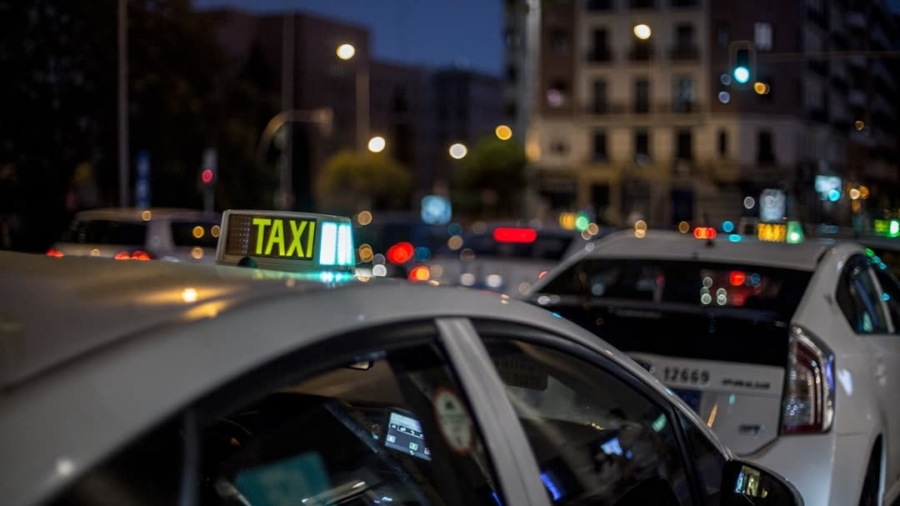The concept of smart cities has emerged as a transformative approach to urban development, leveraging technology and data to enhance the quality of life for residents while promoting sustainability and efficiency. Smart cities utilize interconnected systems that integrate information and communication technologies (ICT) with the Internet of Things (IoT) to manage assets, resources, and services effectively. This integration allows for real-time data collection and analysis, enabling city planners and administrators to make informed decisions that address urban challenges such as traffic congestion, waste management, energy consumption, and public safety.
As urban populations continue to swell, the need for innovative solutions becomes increasingly urgent. By 2050, it is estimated that nearly 68% of the global population will reside in urban areas, leading to heightened demands on infrastructure and services. Smart cities aim to tackle these challenges by fostering a more responsive and adaptive urban environment.
The incorporation of advanced technologies, including artificial intelligence, big data analytics, and automation, plays a pivotal role in this evolution. Among these technologies, drones have emerged as a particularly promising tool for enhancing urban infrastructure and services.
Key Takeaways
- Smart cities utilize technology to improve the quality of life for residents and enhance urban infrastructure.
- Drones play a crucial role in smart city infrastructure by providing efficient and cost-effective solutions for various tasks.
- Using drones in smart cities offers advantages such as improved public safety, faster emergency response, and enhanced city planning and maintenance.
- Challenges and limitations of drone infrastructure in smart cities include privacy concerns, airspace regulations, and technological limitations.
- Regulatory and legal considerations for drone use in smart cities are essential to ensure safe and responsible integration into urban environments.
The Role of Drones in Smart City Infrastructure
Drones, or unmanned aerial vehicles (UAVs), are rapidly becoming integral components of smart city infrastructure. Their ability to collect data from above provides city planners with unique insights into urban dynamics. Equipped with high-resolution cameras, sensors, and GPS technology, drones can perform a variety of tasks that contribute to the overall efficiency of city operations.
For instance, they can conduct aerial surveys for land use planning, monitor environmental conditions, and assess infrastructure health without the need for extensive ground-based inspections. In addition to data collection, drones can facilitate the delivery of services in smart cities. They can be deployed for emergency response operations, delivering medical supplies or equipment to hard-to-reach areas during crises.
Furthermore, drones can assist in traffic management by providing real-time aerial views of congestion patterns, enabling authorities to implement timely interventions. This multifaceted role underscores the potential of drones to enhance not only operational efficiency but also the overall resilience of urban environments.
Advantages of Using Drones in Smart Cities

The advantages of integrating drones into smart city frameworks are manifold. One of the most significant benefits is their ability to gather data quickly and efficiently over large areas. Traditional methods of data collection, such as ground surveys or manual inspections, can be time-consuming and labor-intensive.
Drones can cover vast expanses in a fraction of the time, providing city officials with timely information that can inform decision-making processes. For example, drones equipped with thermal imaging cameras can identify heat loss in buildings, allowing for targeted energy efficiency upgrades. Moreover, drones enhance public safety by providing real-time situational awareness during emergencies.
In disaster scenarios such as floods or fires, drones can be deployed to assess damage and locate victims without putting first responders at risk. Their aerial perspective allows for a comprehensive view of the situation, enabling more effective coordination of rescue efforts. Additionally, drones can be used for routine surveillance and monitoring of public spaces, contributing to crime prevention and community safety initiatives.
Challenges and Limitations of Drone Infrastructure in Smart Cities
Despite their numerous advantages, the integration of drones into smart city infrastructure is not without challenges. One significant limitation is the issue of airspace regulation and management. As drone usage increases, so does the potential for air traffic congestion, particularly in densely populated urban areas.
Ensuring safe operation requires robust air traffic management systems that can accommodate both manned and unmanned aircraft. This necessitates collaboration between various stakeholders, including government agencies, aviation authorities, and technology providers. Another challenge lies in public perception and acceptance of drone technology.
Concerns regarding privacy invasion and surveillance are prevalent among citizens. The use of drones for monitoring public spaces may raise ethical questions about data collection practices and individual rights. Addressing these concerns requires transparent communication from city officials about how drone data will be used and safeguarded.
Additionally, establishing clear guidelines for drone operations can help alleviate fears and foster public trust in this emerging technology.
Regulatory and Legal Considerations for Drone Use in Smart Cities
The regulatory landscape surrounding drone usage is complex and varies significantly across jurisdictions. In many countries, drone operations are governed by aviation regulations that dictate where and how drones can be flown.
This often involves obtaining necessary permits and adhering to safety standards set forth by aviation authorities. Furthermore, legal considerations related to liability and insurance must be addressed as cities adopt drone technology. In the event of an accident or incident involving a drone—such as property damage or injury—determining liability can be complicated.
Cities must establish clear policies regarding insurance coverage for drone operations and outline responsibilities for operators. Additionally, data protection laws must be considered when collecting and storing information gathered by drones to ensure compliance with privacy regulations.
Case Studies of Successful Drone Integration in Smart Cities

Several cities around the world have successfully integrated drones into their smart city initiatives, showcasing the potential benefits of this technology. In Dubai, for instance, the government has implemented a comprehensive drone strategy that includes using UAVs for various applications such as traffic monitoring, infrastructure inspection, and even passenger transport through drone taxis. The Dubai Civil Aviation Authority has established regulations that facilitate safe drone operations while promoting innovation in urban mobility.
Another notable example is San Diego, California, where drones have been employed for environmental monitoring and wildlife conservation efforts. The city utilizes drones equipped with sensors to track coastal erosion and monitor water quality in local beaches. This data informs city planners about necessary interventions to protect natural resources while enhancing public access to clean recreational areas.
These case studies illustrate how cities can harness drone technology to address specific urban challenges while improving overall quality of life.
Future Opportunities and Innovations in Drone Infrastructure for Smart Cities
The future of drone infrastructure in smart cities holds immense potential for innovation and growth. As technology continues to advance, we can expect drones to become even more sophisticated in their capabilities. For instance, developments in artificial intelligence may enable drones to autonomously navigate complex urban environments while avoiding obstacles in real-time.
This could significantly enhance their utility for tasks such as delivery services or emergency response operations. Moreover, the integration of drones with other smart city technologies presents exciting opportunities for collaboration. For example, combining drone data with analytics platforms could provide deeper insights into urban dynamics, allowing city officials to make more informed decisions regarding resource allocation and service delivery.
Additionally, advancements in battery technology may lead to longer flight times and increased payload capacities for drones, expanding their range of applications within urban settings.
The Potential Impact of Drones on Smart City Development
The integration of drones into smart city infrastructure represents a paradigm shift in how urban environments are managed and developed. By leveraging aerial technology for data collection, service delivery, and emergency response, cities can enhance operational efficiency while improving the quality of life for residents. However, realizing this potential requires addressing challenges related to regulation, public perception, and ethical considerations surrounding data use.
As cities continue to evolve into smart ecosystems, the role of drones will likely expand further, paving the way for innovative solutions that address pressing urban challenges. The ongoing collaboration between government agencies, technology providers, and communities will be essential in shaping a future where drones contribute positively to urban living while ensuring safety and privacy are prioritized. The journey toward fully realizing the potential impact of drones on smart city development is just beginning; however, the possibilities are vast and promising.
In the rapidly evolving landscape of smart cities, the integration of drone infrastructure is becoming increasingly vital. Drones offer innovative solutions for urban planning, traffic management, and environmental monitoring, making them indispensable tools for modern city management. A related article that complements the discussion on drone infrastructure is about the best software for house plans. This article explores how advanced software tools are essential for designing efficient and sustainable urban environments, which aligns with the goals of smart cities. By leveraging both drone technology and sophisticated planning software, cities can optimize their infrastructure and enhance the quality of life for their residents.
FAQs
What is drone infrastructure?
Drone infrastructure refers to the network of drones, ground control stations, communication systems, and other supporting technologies that enable the operation of drones in various applications.
How do drones contribute to smart cities?
Drones contribute to smart cities by providing efficient and cost-effective solutions for various urban challenges, such as infrastructure inspection, public safety, traffic management, and environmental monitoring.
What are the key benefits of using drones in smart cities?
The key benefits of using drones in smart cities include improved efficiency in infrastructure maintenance and monitoring, enhanced public safety and emergency response, reduced traffic congestion, and better environmental management.
What are the challenges of integrating drone infrastructure into smart cities?
Challenges of integrating drone infrastructure into smart cities include regulatory hurdles, privacy concerns, airspace management, public acceptance, and the need for reliable communication and navigation systems.
How can drone infrastructure be optimized for smart city applications?
Drone infrastructure can be optimized for smart city applications through the development of advanced technologies for autonomous operation, real-time data processing, secure communication, and integration with existing urban infrastructure.

